The Medieval University Monopoly
New universities sprang up across medieval Europe at a rapid rate, yet at the start of the 19th century, England had only two: Oxford and Cambridge. For centuries, England’s two oldest institutions enjoyed a strict duopoly on higher learning, enforced by law. Why were they allowed to?
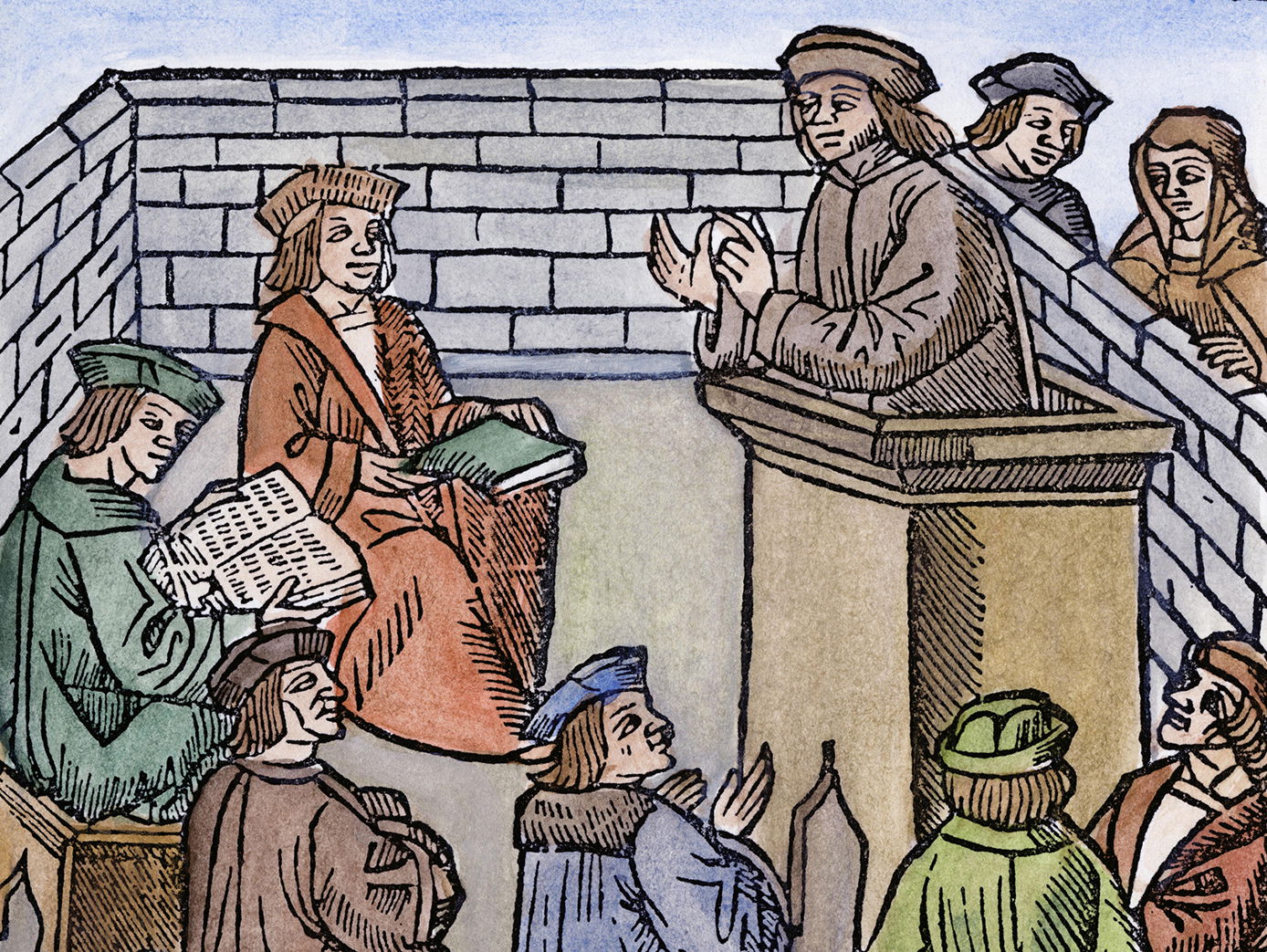
A professor lectures at a medieval university. Geneva, c.1525.
In June 1686, a small family – a clergyman, his wife, and their daughter – disembarked from a ship at the docks of Boston, Massachusetts. They had just finished a long journey of a month or more across the Atlantic, escaping from England. The clergyman, a scholarly, 60 year old named Charles Morton, was fleeing prosecution. His crime? Teaching students – or, more specifically, teaching students in north London.
From 1334 onwards, graduates of Oxford and Cambridge were required to swear an oath that they would not give lectures outside these two English universities. It was a prohibition occasioned by the secession in 1333 of men from Oxford to the little Lincolnshire town of Stamford. They were escaping the violence and chaos which often attended medieval university life – the frequent battles between students, and between students and other communities within the town – the same conditions, in fact, which had led an earlier generation of scholars to up sticks and leave Oxford for Cambridge. But their action now threatened both universities, and so the Stamford experiment had to be suppressed. The sheriff of Lincoln, the lord chancellor, even the king, Edward III, were all called into play and the result became known as the ‘Stamford Oath’; an oath which Oxford and Cambridge graduates continued to swear until 1827.
It is true to say that Charles Morton was unusually unlucky in being prosecuted for breaking this oath by establishing his own academy at Newington Green in London. His evident success in recruiting numerous and impressive students, like Daniel Defoe, was part of the problem, as were his staunchly Presbyterian religious beliefs and his radical, republican political views. But the depressing effect of the Stamford Oath was undeniable and its symbolism inescapable. Repeated at each graduation and reinforced by successive revisions of both universities’ statutes, it made their determination to preserve a duopoly in higher learning absolutely plain.
This was in sharp contrast to the European experience. Just as Oxford and Cambridge were establishing and policing their unique right to produce graduates, ever growing numbers of universities were being founded across the Continent. In the 14th century new institutions appeared in towns from Pisa to Prague; from Kraków to Cahors. In the years that followed, the gap in numbers between English universities and those on the Continent grew even greater, with over 100 founded or refounded in Europe after 1500. Oxford and Cambridge remained the only universities in England. Indeed, even as Morton’s teaching career began in the mid-17th century, universities were springing up in such unlikely places as the small towns of Prešov in Slovakia and Nijmegen in the Netherlands. The English experience was also very unlike that of the Scots, who acquired five universities between 1451, when Glasgow opened, and 1582, when Edinburgh was established.
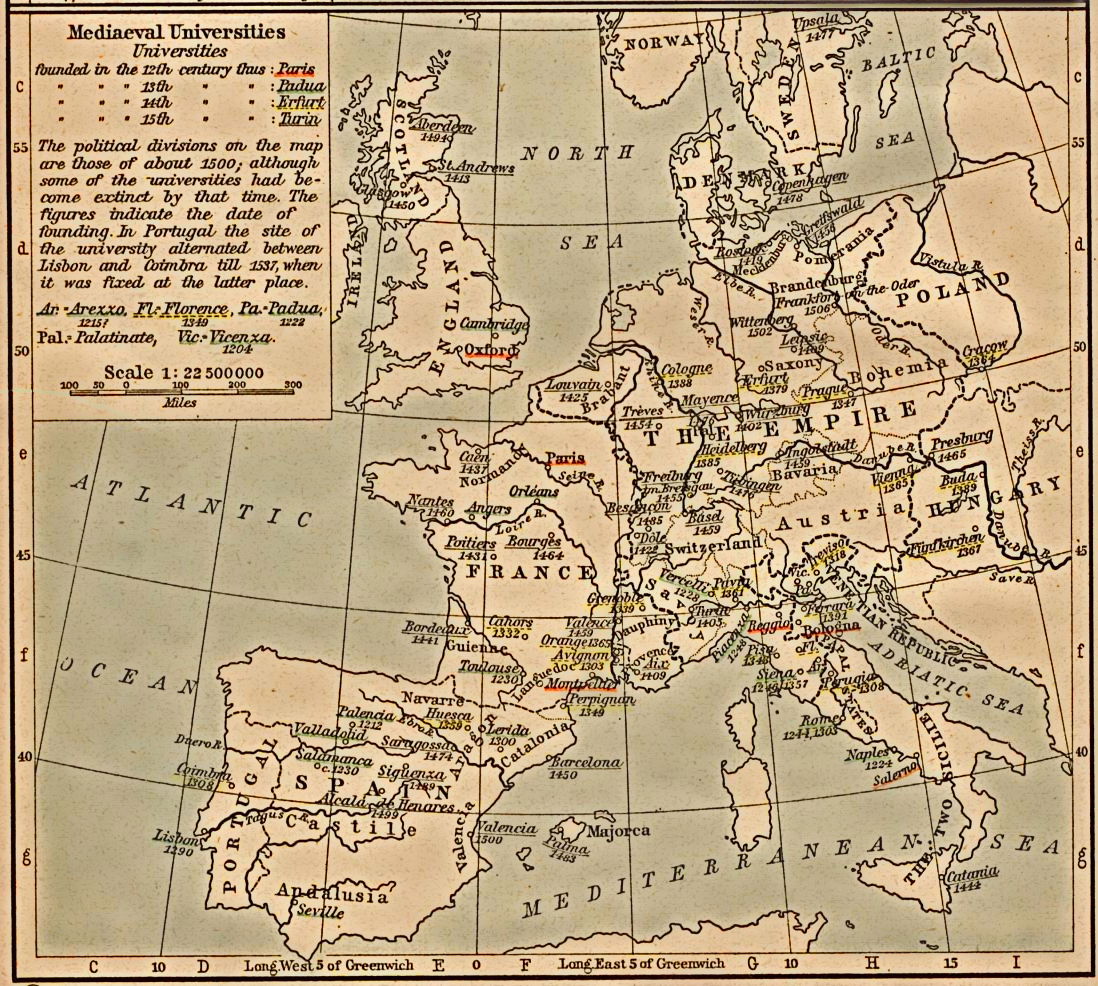
Moreover, the abolition of the Stamford Oath in 1827 was followed by a century in which universities were created throughout England. The University of Durham opened in 1833. The University of London received its charter in 1836. More remarkably still, by the end of the Victorian era, both Oxford and Cambridge were actively involved in founding new institutions. Without their support, many of the other, civic universities in England would never have come about. In little more than a generation, then, not only had the higher education world of England been hugely transformed, but the very universities which had sought to crush competition were now actively encouraging it.
All this begs a question – in fact, it begs several. In the first place, there is the question of why it was that Oxford and Cambridge were so keen to suppress other universities. Secondly, there is the question of how they succeeded. Finally, just as importantly, and perhaps even more interestingly, there is the question of what changed to make them reverse this position so comprehensively in the years after 1827.
In some respects, the question of why Oxbridge was so jealous of its status seems the easiest to answer. In the most general terms, it makes sense for the providers of an exclusive product – a university degree, say – to take action to preserve their exclusivity. Universities were originally little more than a sort of trade guild, a separate group of masters and their students, who controlled admission, regulated quality and negotiated with the local authorities. Just as butchers and bakers sought to restrict the supply of their skills, so masters within the university hoped to protect their distinctive rights. These privileges were threatened by rivals. Oxford and Cambridge continued to act like guilds long after they lost or forgot their origins. Thus it was that even in the 17th century they fought off attempts by places as various as Carlisle and London, Ripon and Shrewsbury to establish their own institutes of higher learning. Thus it was that they crushed the nascent Durham University in 1660. And thus it was that they pursued poor Charles Morton.
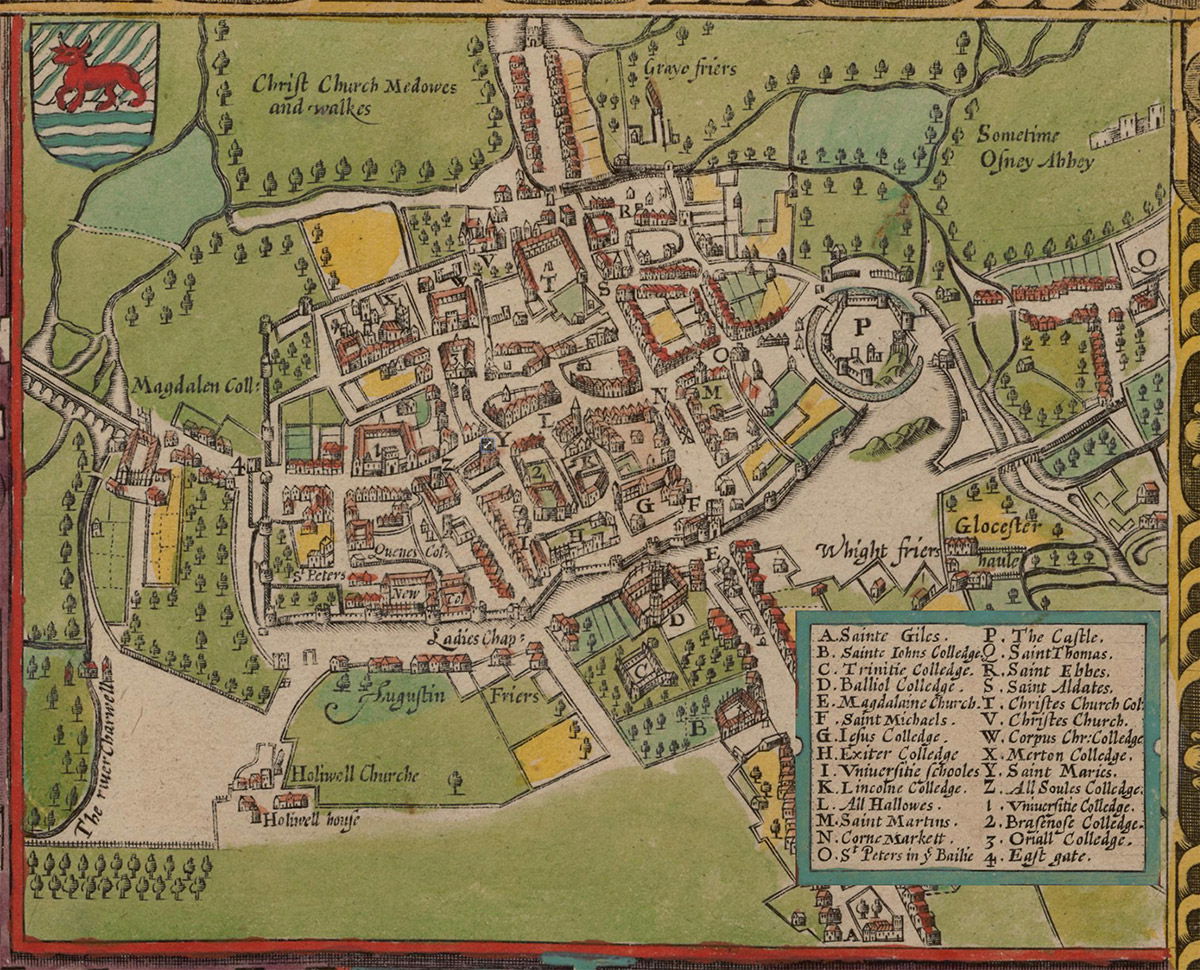
Why should anyone let them get away with this? What was in it for those who allowed these restrictive practices? Modern governments endlessly advocate competition in higher education, with politicians – ranging from Labour’s Tony Crosland in April 1965 to the current Conservative prime minister Theresa May in February 2018 – all equally keen to foster a variety of different institutions in a variety of different places. Why should powerful people in the past have taken such a different view? Why were they so willing to tolerate a sort of academic monopoly?
The answer is control. Just as the two universities wanted to control the supply of teachers and students, so the English Church and state wanted to control the universities. Universities could be – indeed, were – the source of dangerous heresies, where people learnt to think the wrong things. Oxford gave birth to the reforming, proto-Protestant Lollard movement in the 14th century. Cambridge was home to an alarming nest of evangelicals – humanist-inspired converts to church reform like the martyrs Robert Barnes (c.1495-1540) and Thomas Bilney (1495-1531) – 200 years later. With only two universities it was easier to control theological debate and even to use one of the institutions to oversee the other. It is no coincidence that the Cambridge-educated bishops Hugh Latimer and Nicholas Ridley, together with the Cambridge-educated archbishop Thomas Cranmer, were sent to loyalist, Catholic Oxford to be tried and burnt in the 1550s.
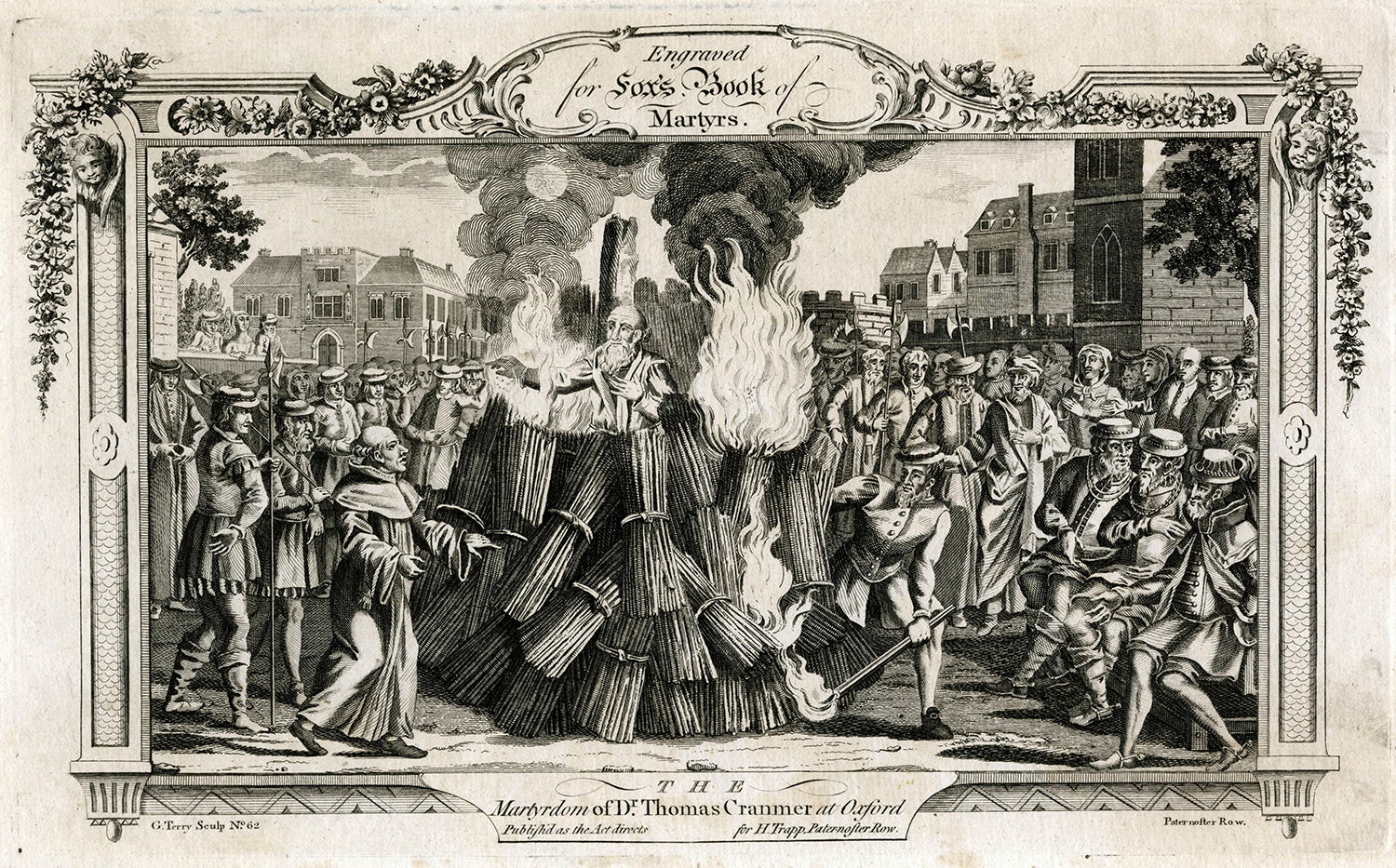
Politically, too, universities could be highly problematic for the powerful, providing an environment in which subversion could be debated and even promoted. In Thomas Hobbes’ Behemoth (1668), for example, the philosopher claimed that Oxford and Cambridge had been the nurseries of treason – ‘The core of rebellion’ – in the recent civil war. ‘The Universities’, Hobbes concluded, ‘have been to the nation, as the wooden horse was to the Trojans.’ He may have exaggerated, but there could be no doubt of the potential for students and scholars to cause trouble, whether this was the Oxonians who conspired against Henry VII in the 1480s, or those who argued for a Jacobite succession in the 1720s. The more universities, the more trouble likely to be caused, and less control that could be exerted.
Political and religious divisions forestalled any such centralised control on the continent. By 1790, Germany had 34 universities, Italy 26; even Spain had 23. In England, by contrast, the dominance of Oxford and Cambridge from the 14th to the 19th centuries was the product of a deal. The powerful would protect the two universities, if the two universities protected the powerful. The Stamford Oath – created by Edward III, and enforced by the two institutions through their skilful deployment of alumni pleading their cause – was, as a result, not important for what it was, or even what it did. Rather, it was significant for what it represented: a mutually supportive alliance between the universities and the powerful English state.
If the existence of this alliance helps explain why Oxbridge was successful in blocking any rivals, then the breakdown in this relationship also helps account for what happened next. The 1820s were a period of acute crisis for Church, state and the two universities alike. The decision to grant full civil liberties to Dissenters in 1828 and then to Roman Catholics in 1829 reflected – and helped enact – a breakdown in the exclusive link between the Church of England and the government. It also called into question the privileged position of Oxford and Cambridge. Still redoubts of Anglican orthodoxy, still loyal to the confessional state, they both looked, as the poet and critic Matthew Arnold would later observe of Oxford, homes ‘of lost causes, and forsaken beliefs, and unpopular names, and impossible loyalties’.
In was in this environment that the Stamford Oath was abolished and it became possible to plan for the creation of new universities. University College London – or the University of London, as it was originally called, opened in 1828 with no state sanction and no link to any Church. It would be fiercely opposed by the two existing institutions, and would be mocked by right-wing journalists as a place with ‘No CHURCH, no KING, no “nothing else,”’; an institution which ‘has no claim to the title of University.’
But with the state unwilling and the Church unable to suppress this upstart establishment, the duopoly was broken. Loyalist, royalist Anglicans were impelled to found the suitably religious, eminently establishment King’s College London in response. Even more tellingly, in the early 1830s the Bishop of Durham would use some of his huge resources to found a university in the north, not least because he feared that unless he did the state would sequestrate his income. It was clear that the old regime was over. Oxford and Cambridge had lost their exclusivity.
Yet, although King’s and UCL would become part of a chartered, federal University of London and Durham would also obtain recognition as a full university too, no other English institution achieved that status for decades. Not until 1880 would Manchester become the fifth university in England. This time, however, Oxford and Cambridge could not be blamed. They did nothing to suppress other institutions – and in any case could likely have done little even if they had wanted to. It was indifference and a lack of financial backers which left English cities bereft of any university.
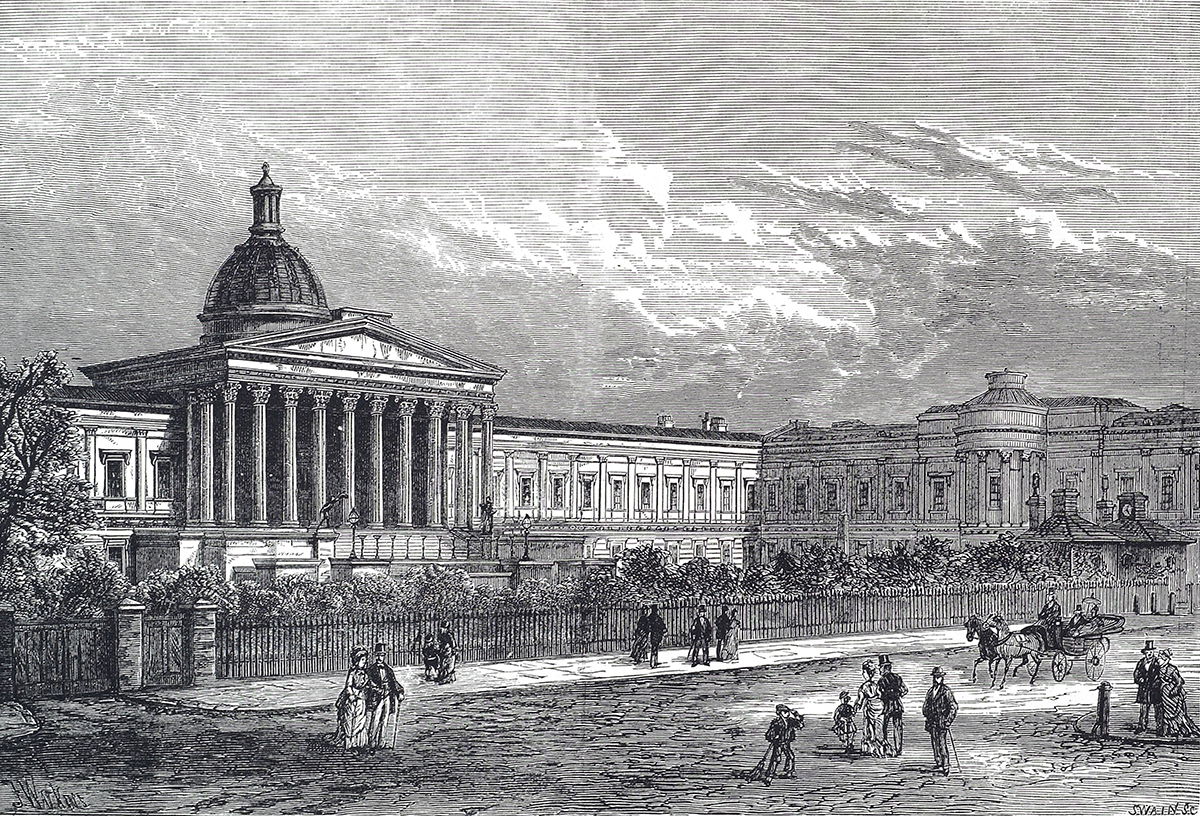
Strikingly, indeed, from the 1870s onwards it was Oxbridge that actively encouraged the establishment of new institutions. At Bristol, for instance, it was the master of Balliol College, Oxford, Benjamin Jowett, who acted as one of the chief promoters of a university college in 1876. Balliol and New Colleges gave regular donations to make this ambition a reality. At Sheffield, at Reading and at Nottingham, it was a series of university lectures organised by Cambridge which served to spur locals into founding their equivalents. Stand in the entrance hall of one of the lineal descendant of this programme – Nottingham Trent University – and you can still see the arms of Oxford and Cambridge Universities on the wall. They are there not just because the new college wanted status by association but because the two ancient institutions had actively supported its creation.
They had done so for two reasons, each of which spoke of the new dispensation in which Oxbridge now found itself. In the first place, both Universities were forced to face the fact that the state retained its power over them and could use this power against them. For reformers, this provided an opportunity to press for change. For conservatives, it meant a grudging acceptance of reform. Supporting the foundation of new colleges was something each group could agree on: one side, because it would widen access to higher education; the other, because it served as a means of turning the spotlight away from Oxford and Cambridge and allowing them to retain independence. Many within the two ancient universities also sought to found new ones because they hoped this might actually increase the importance and influence of Oxford and Cambridge. Jowett’s support for Bristol grew out of his wider plan for a huge, federal university in which the provincial colleges would act as feeder schools for Oxbridge. Ironically, in other words, having lost the battle to supress competition, they now hoped to win the war for control by directing the expansion of the system.
In truth, however, it was all too little, too late. Reform still came to Oxbridge, and by 1901 well-placed commentators were beginning to notice that the civic institutions were developing a sense of real independence. ‘Have the [ancient] Universities created a Frankenstein that will threaten his makers?’ the classicist Lewis Campbell asked; ‘Will the newer growths ultimately supersede the old?’ Once the Stamford Oath had ended, a new world of higher education was possible. With more than 100 institutes of higher education in England, this question still remains valid today.
William Whyte is the author of Redbrick: A Social and Architectural History of Britain’s Civic Universities (Oxford University Press, 2015).